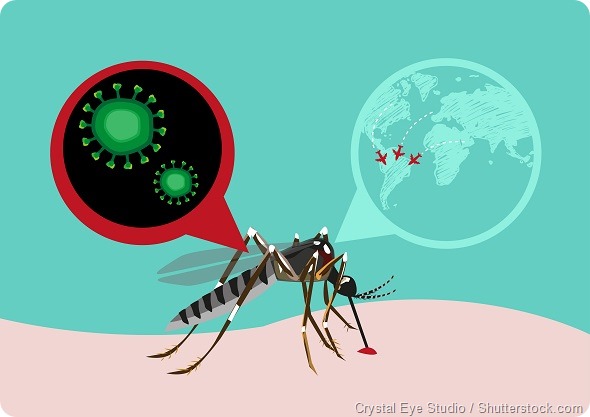Yesterday, the World Health Organization (WHO) announced that the Zika virus outbreak in Brazil was “spreading explosively” in the Americas and that as many as four million people could be infected by the end of the year.
Zika virus is a mosquito-borne flavivirus primarily transmitted by Aedes mosquitoes. These mosquitoes are found throughout much of the Americas and are also responsible for the transmission of the viruses that cause dengue fever and chikungunya fever.
In the majority (around 80%) of cases, Zika infection is asymptomatic. Where symptoms (usually fever, joint pain and rash) do develop, they are generally mild and resolve within a week. However, there is increasing concern about the possibility of Zika virus contracted by pregnant women impairing embryonic brain development causing the babies to be born with an undersized brain (microcephaly).
Although arrival of the virus in Brazil was associated with a marked increase in the number of infants born with microcephaly, a definitive link to the Zika virus has yet to be established.

Zika virus was first detected 1947 in Uganda but was restricted to infection of monkeys in Africa. Last year Zika virus affected people in Brazil for the first time and has now spread across Brazil and to 22 other countries in the region. There are real concerns that the Zika virus will also soon reach Asia.
The WHO is increasing surveillance of Zika virus infections and of microcephaly and other neurological conditions both in countries where the Zika virus is known to be present and in those countries to which the virus may spread. They are also supporting efforts to ensure accurate clinical diagnosis and treatment for patients, and to promote prevention (through mosquito control).
WHO Director-General, Margaret Chan, has convened an International Health Regulations Emergency Committee on Zika virus, which will take place on Monday 1 February.
At this meeting the convened experts will decide whether the Zika outbreak constitutes an international public health emergency and decide whether a co-ordinated global response is required. Importantly, they will also assess the levels of travel and trade restrictions that are justified so economies are not unnecessarily impacted by inappropriate embargos.
The Centers for Disease Control and Prevention (CDC) has developed interim diagnosis and treatment guidelines for health care providers in the United States who are caring for infants born to mothers at risk of Zika virus infection during pregnancy.
The Zika virus is not deadly as was witnessed last year with the Ebola virus, but since it is transmitted by a vector that is prevalent across large, highly populated, frequently visited areas it represents a real risk.
Furthermore, since the virus is new to the Americas the population will not have any natural immunity to the infection allowing it to spread rapidly. It is imperative that inhabitants of, and visitors to, infected areas ensure that they use mosquito repellents and nets effectively and do not allow stagnant water to collect and provide potential mosquito breeding grounds.
The decisions of the Emergency Committee will be posted on the WHO website next week.